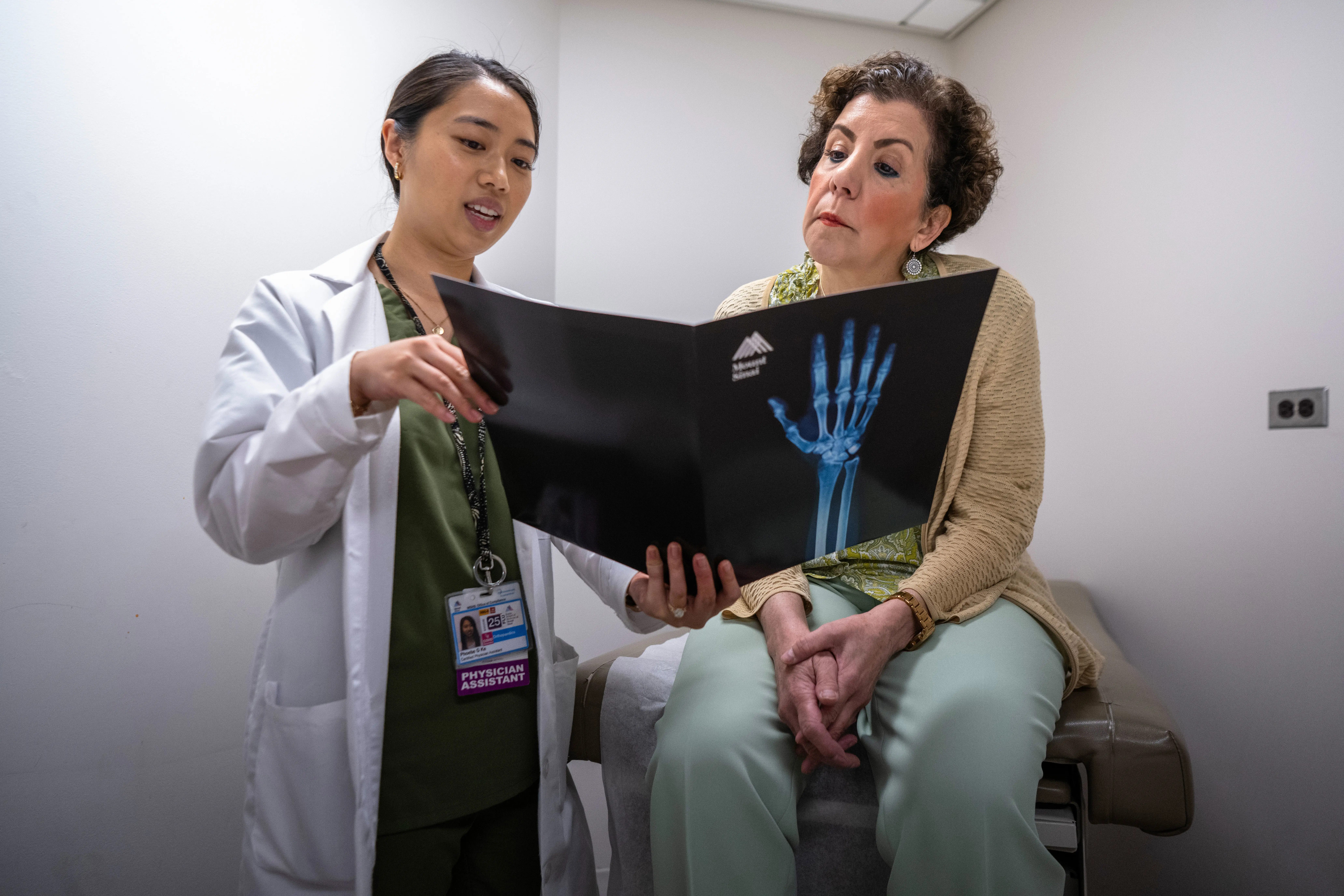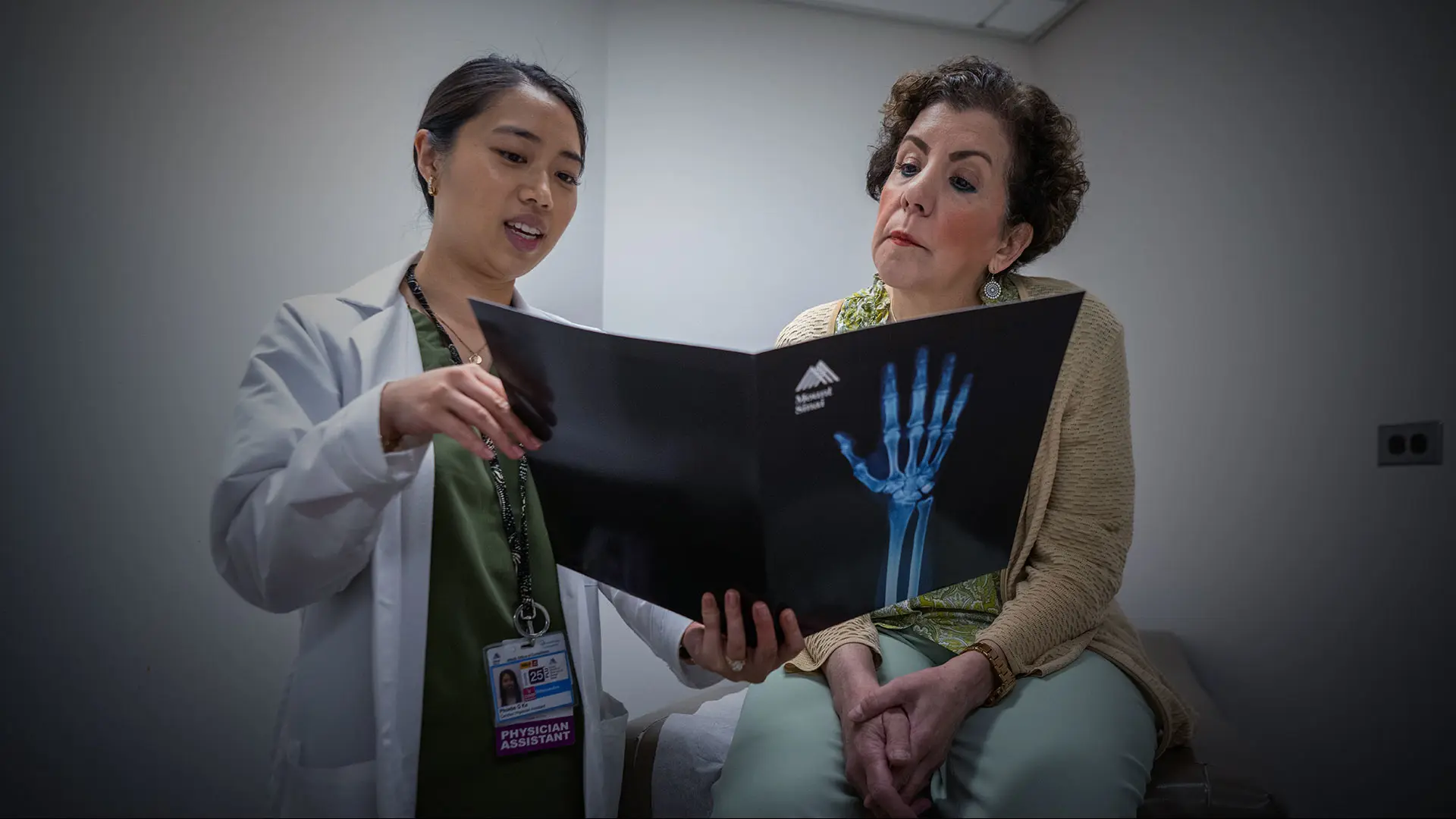Each year, 2 million people nationwide sustain a fragility fracture that impacts their quality of life and mobility. Although many seek surgical treatment, Mount Sinai’s Phoebe Ke, PA-C, MHA, CCD, says only a small percentage are subsequently engaged in any form of bone health management.
“In most cases, these fractures are the result of osteoporosis or low bone density,” explains Ms. Ke, a physician assistant with the Department of Orthopedics at The Mount Sinai Hospital. “Many of these patients do not know they have osteoporosis and thus are not treated for it, which puts them at high risk for sustaining a future fracture.”
Ms. Ke and the Department are taking steps to reduce that risk. In January 2025, they launched Own the Bone®, a fracture liaison service in partnership with the American Orthopaedic Association. The goal, Ms. Ke says, is to have all patients aged 50 and older who sustain a low-energy trauma-related fracture of the hip, pelvis, vertebrae, wrist, or arm evaluated and treated for osteoporosis.
“Our hope is that, through identification and screening of patients who have sustained these fractures, we can offer interventions that effectively reduce the number of subsequent fractures we see among them,” says Ms. Ke, the coordinator for the program.
How the Own the Bone Program Works
Patients are typically referred to the program following surgical treatment for a fragility fracture. Once a referral is made, Ms. Ke visits the patient during their hospitalization, or contacts them upon discharge, to discuss the program and its benefits. Those who consent are scheduled for a more in-depth consultation, during which Ms. Ke reviews their medical history, lifestyle, diet, and physical activity, and confirms whether they have undergone any tests or scans for osteoporosis or low-bone density.
“There is a lot for patients to deal with following a fracture, even from a purely mobility standpoint,” Ms. Ke says. “My goal is to better understand their situation, address any questions or concerns they have, and give them as much information as possible so we can make informed decisions together.”
Following the initial consultation, Ms. Ke will refer patients for a bone density scan or DXA test to obtain a formal diagnosis of osteoporosis or low bone density. She will also refer them to specialists in fields such as physical activity and nutrition to explore interventions for improving their bone health. In some cases, she will also prescribe patients therapeutic agents such as bisphosphonates, denosumab, and parathyroid hormone analogs.
“Although Own the Bone is a fracture liaison service, we manage patient medications through the program,” Ms. Ke says. “But all our bone health management services are available under one roof, which is convenient for our patients because that removes the challenges often involved in accessing specialists.” She adds that participants will be monitored through follow-up consultations to ensure that interventions are effective in enhancing bone health.
The program also works with patients to reduce their risk for future bone breaks by discussing nutrition, exercise, lifestyle adjustments, and how to prevent falls at home.

Ms. Ke reviews a program brochure with a patient.

Ms. Ke reviews a bone density scan with a patient.
Expanding the Program to Hospitals Across the Mount Sinai Health System
According to Ms. Ke, more than 300 Mount Sinai patients have been engaged in Own the Bone since its launch. That number is likely to increase significantly over the coming months as she works with emergency departments at The Mount Sinai Hospital, Mount Sinai Morningside, and Mount Sinai West, all located in Manhattan, to grow and streamline the referral process. This will facilitate a potential expansion of the program to six Mount Sinai hospitals across New York City, including Mount Sinai Brooklyn and Mount Sinai Queens.
Meanwhile, Ms. Ke is expanding the program to provide bone health evaluations and interventions to individuals who have not sustained a fragility fracture but are concerned about their bone health. They include patients who are postmenopausal and those who have a family history of osteoporosis.
“There are many individuals who would benefit from having their bone health managed and treated,” Ms. Ke says. “The more we can identify and treat patients with osteoporosis more broadly, the more we can help them prevent fractures so they maintain their quality of life and independence.”
Featured

Phoebe Ke, PA-C, MHA, CCD
Physician Assistant, Orthopedics, The Mount Sinai Hospital
